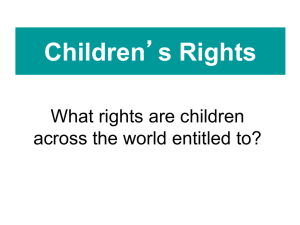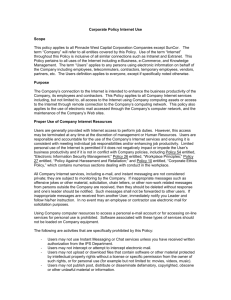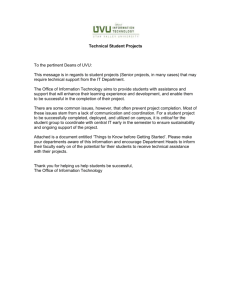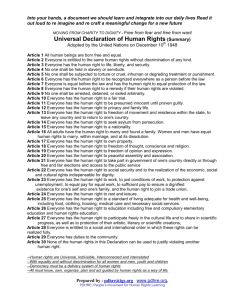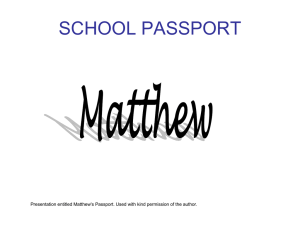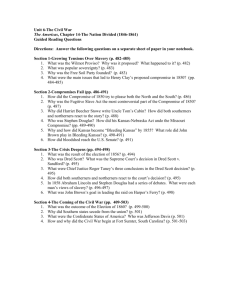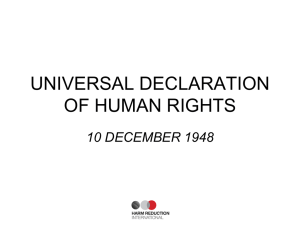Chapter 21 test prep
advertisement
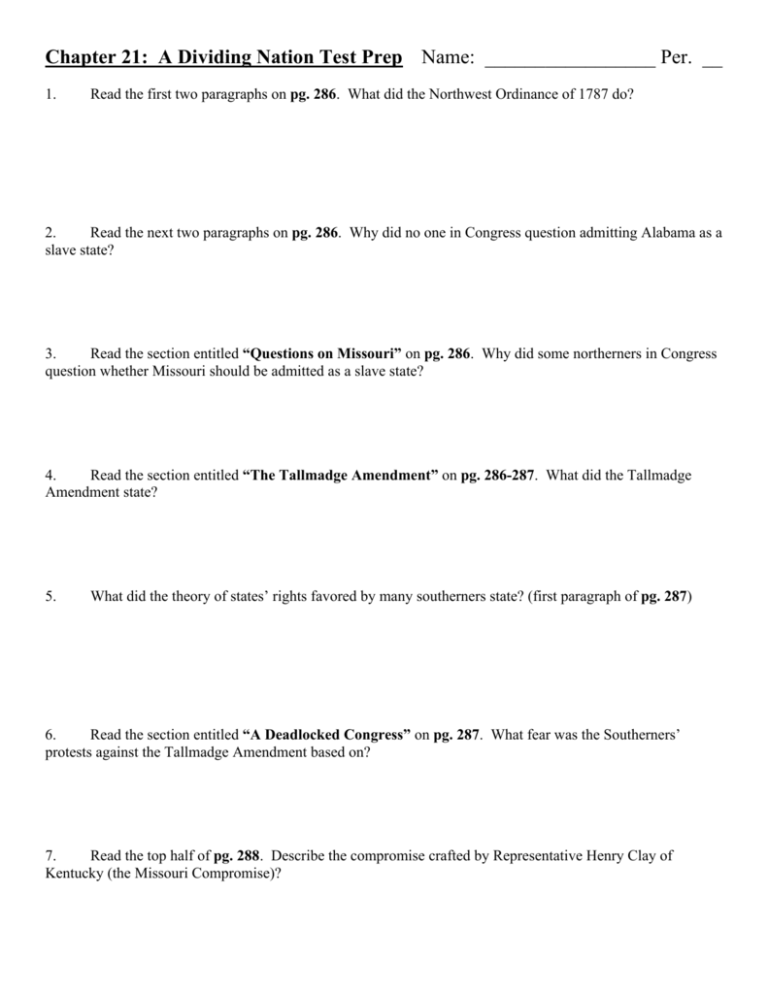
Chapter 21: A Dividing Nation Test Prep Name: _________________ Per. __ 1. Read the first two paragraphs on pg. 286. What did the Northwest Ordinance of 1787 do? 2. Read the next two paragraphs on pg. 286. Why did no one in Congress question admitting Alabama as a slave state? 3. Read the section entitled “Questions on Missouri” on pg. 286. Why did some northerners in Congress question whether Missouri should be admitted as a slave state? 4. Read the section entitled “The Tallmadge Amendment” on pg. 286-287. What did the Tallmadge Amendment state? 5. What did the theory of states’ rights favored by many southerners state? (first paragraph of pg. 287) 6. Read the section entitled “A Deadlocked Congress” on pg. 287. What fear was the Southerners’ protests against the Tallmadge Amendment based on? 7. Read the top half of pg. 288. Describe the compromise crafted by Representative Henry Clay of Kentucky (the Missouri Compromise)? 8. Read the top half of pg. 289. What did the “gag rule” prevent? 9. fear. Read the sections entitled “Southern Fears” on pg. 289. List two things that southern states did out of 10. Read the section entitled “Fugitive Slaves” on pg. 290. Why did slaveholders consider northerners who helped slaves escape to be no better than bank robbers? 11. Read the section entitled “Slavery in the Territories” on pg. 290. What did the Wilmot Proviso state? 12. Read the section entitled “Statehood for California” on pg. 290. Why wasn’t California admitted into the Union in 1849? 13. Read the top half of pg. 291. List the four parts of Henry Clay’s compromise (the Compromise of 1850). (In other words, what four things did it do?) 14. Read the section entitled “The Fugitive Slave Law” on pg. 292. What occurred under the fugitive slave law? 15. Why did so few fugitive slaves living in the North get returned to their owners? (same reading as above) 16. Read the section entitled “Uncle Tom’s Cabin” on pg. 292-293. What effect did the novel Uncle Tom’s Cabin have on the debate over slavery? 17. Read the section entitled “The Ostend Manifesto and the Kansas-Nebraska Act” on pgs. 293. What did the Ostend Manifesto lead northerners to believe? 18. Read the top half of pg. 294. List two things that Stephen A. Douglas’s final bill (the Kansas-Nebraska Act) did. 19. Read the section entitled “Bloodshed in Kansas” on pgs. 294-295. Describe the bloodshed in Kansas and what caused it. 20. Read the section entitled “Violence in Congress” on pgs. 295-296. Describe the violence that took place in Congress and why it occurred. 21. Read the section entitled “The Dred Scott Case” on pg. 296. Who was Dred Scott and what did he argue in his case? 22. Read pg. 297. What was the first judicial bombshell of the Dred Scott decision? 23. What was the second judicial bombshell of the Dred Scott decision? (same reading as above) 24. How did the reaction to the Dred Scott decision amongst slaveholders differ from that of many northerners? (last two paragraphs of pg. 297) 25. Read the first two paragraphs on pg. 298. What beliefs were Republicans united by? 26. Read the section entitled “The Lincoln-Douglass Debates” on pg. 298. What resulted from the Lincoln-Douglas debates? 27. Read the section entitled “John Brown’s Raid” on pgs. 298-299. What was the plan of the abolitionist John Brown and what happened to him and his men when they tried to carry it out? 28. Read the section entitled “The Election of 1860” on pg. 299. How did Abraham Lincoln win the presidential race of 1860? (in your answer, be sure to include who voted for him) 29. What message did Lincoln’s election give white southerners? (same reading as above) 30. Read the section entitled “Secession” on pg. 300. What happened in Charleston, South Carolina on December 20, 1860? 31. Read the section entitled “Civil War” on pg. 300. Describe the April 12, 1861 event that started the Civil War. Read the passage below; it comes from an important novel discussed in chapter 21. Then read each question and choose the best answer based on the passage. 32. What novel is this passage from? 33. Who is the author of this passage? 34. Who is the character Legree? 35. What does Tom refuse to do when he says “can’t do, no way possible”? 36. What was the author’s purpose for writing this novel? 37. This passage is an example of A. a piece of fiction written about an event that never happened. B. a secondary source written by an eyewitness to an event. C. a primary source written by an eyewitness to an event. D. an opinion piece written to express the author’s views.
